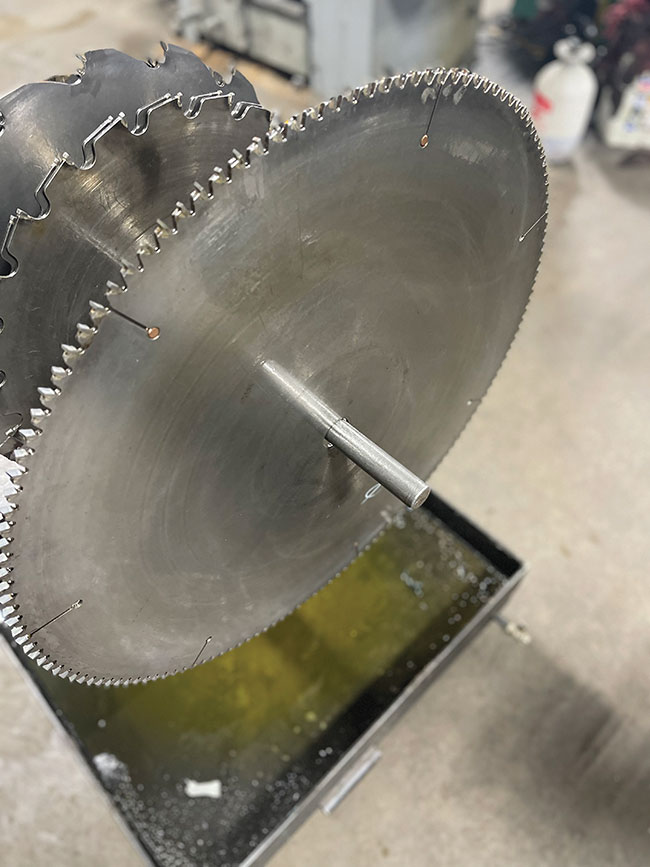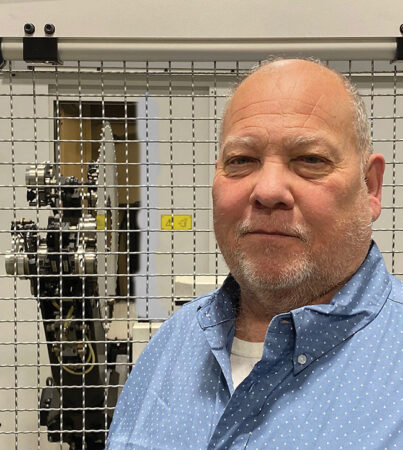
Features
Opinions
Equipment
Sawmilling
Saw filing 101: Designing circle saws
March 15, 2024 By Paul Smith
 Photo: BID Group.
Photo: BID Group. Today’s sawmill has the same goals as the mills of yesterday. For the most part, it is to produce as much high-quality lumber as fast and as safely as possible.
In some circles, no pun intended, some feel we have just about reached the limits of our saw bodies where feed speed is concerned. There is no argument, the faster feed speeds and thinner kerf in today’s mills require better performing saws, experienced filers and well-maintained equipment. Because of advanced technology, computer driven systems and modern and more reliable components the machines may be pushing saws to their limits.
Looking at new start-ups for 2024 saws are holding up with good runs at feed speeds of approximately 600 feet per minute. For years, circle saw expectations have been pushed to their limits and re-designed to meet new expectations. Our industry has met and/or exceeded what the mill needed when it came to saws when machinery sped up, stricter tolerances were introduced and even when log quality changed (I know I remember the first curve sawing.)
So where can we push the saws of this decade? We still have the knowledge and technology to reduce kerf. And that still adds to the mill’s bottom line. But like I mentioned earlier, high RPMs and increased rim speeds may have our feed speeds close to a max. One may overcome the limits on “rim speed” by utilizing plasma hard tips. Unlike a braze in tip, this plasma hard tip becomes part of the saw, so the tip is more likely to stay in at high RPMs.
Another hurdle would be designing a saw body with enough teeth that also had enough gullet space for removing the sawdust. Your sawfiler has to be able to find the sweet spot when tensioning for the higher RPMs. It’s no longer just about the formulas and mathematics. The filer, millwright and both mill and filing room maintenance personnel must work together and communicate. They must use previous experiences and be able to safely test new ideas.
Today, the industry is cutting boards in a manner that yesterday’s calculations wouldn’t even allow. Manufacturers are producing bottom, top and double arbor machines. Some are climb cut, some conventional, but all high-tech and designed to push saws to their limits and beyond. Load indexes are being surpassed as saw kerf is thinner and feed speeds are increased. In the not-so-distant past, the load index was the calculation that determined if a saw would stand up under the RPMs and feed speeds.
Of course, great care is being used when experienced filers and professionals put saws in the cut that may not follow the old conventional wisdom.
Manufacturers and saw designers will always suggest not changing multiple variables at once. And with most high-production in-line sawmills, there is little opportunity to remedy a problem without stopping the entire line. For a shift to be productive, the mill manager happy, and the circle saw to be considered a success, it must be designed and maintained to cut boards for the entire shift, or until a scheduled saw change.
I personally feel one of the advantages we have in the industry today is the collaboration between the mill manufacturers and saw companies. This relationship allows us to provide mills with a saw that we know will perform well and machinery that will work with the circle saws we provide.
I am pleased that we can now have control over quality and able to provide all aspects needed both with saws and filing equipment. I have to say I rely on top experienced sawfilers all across the country for help and insights and to bounce my own ideas off from. And may I say, utilizing these seasoned filers for help has certainly paid off for me. I would like to take this opportunity to thank just a few (definitely not all) of the guys I go to for expert advice on saw design: Franklin Goforth, Michael Smith, Mike Halterman, Mike West, and a few retired and semi-retired filers.
I look forward to meeting future circle saw needs and working with our next generation of saw filers. Because of the sawfilers’ apprenticeship program in place today, I expect tomorrow’s filer to be better educated and ready for even faster feed speeds and thinner kerf.
 Paul Smith is a saw filing consultant and founder of Smith Sawmill Service, now part of BID Group. You can reach him at Paul.Smith@bidgroup.ca.
Paul Smith is a saw filing consultant and founder of Smith Sawmill Service, now part of BID Group. You can reach him at Paul.Smith@bidgroup.ca.
Print this page